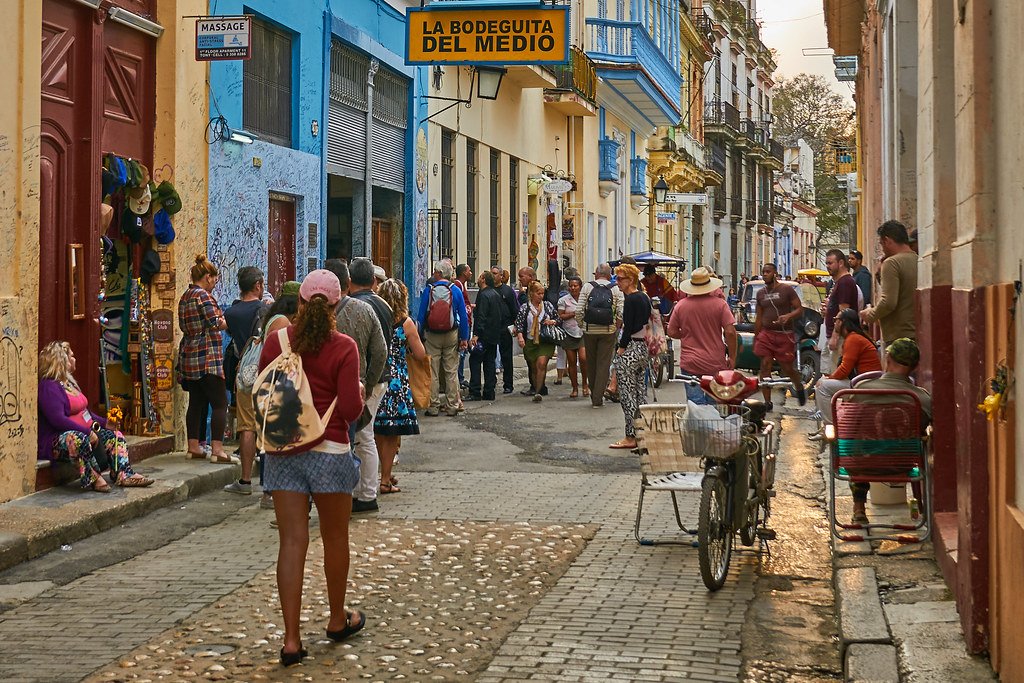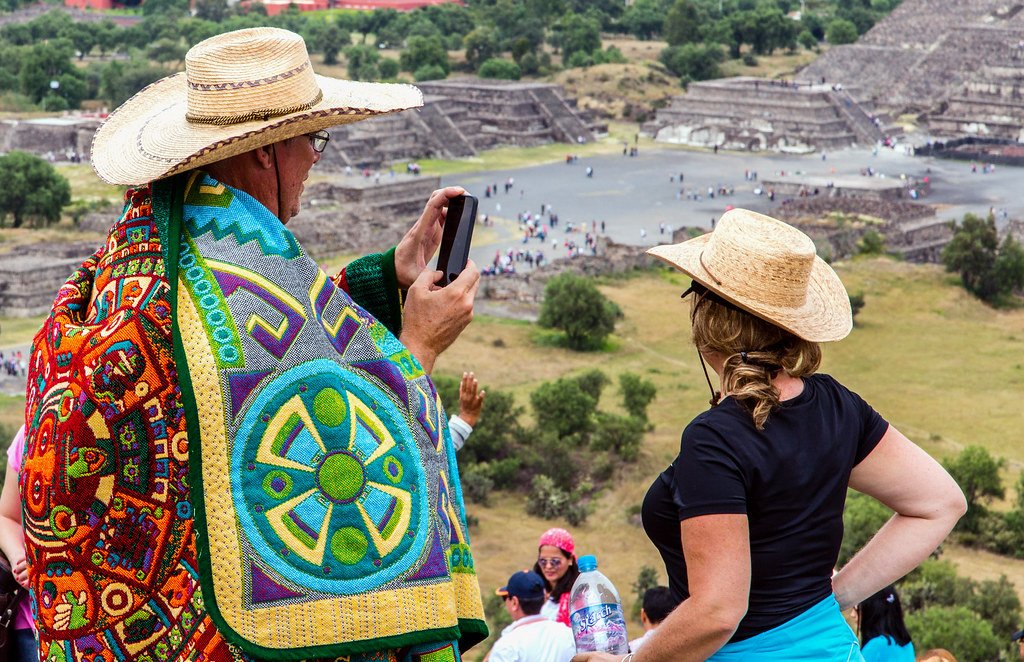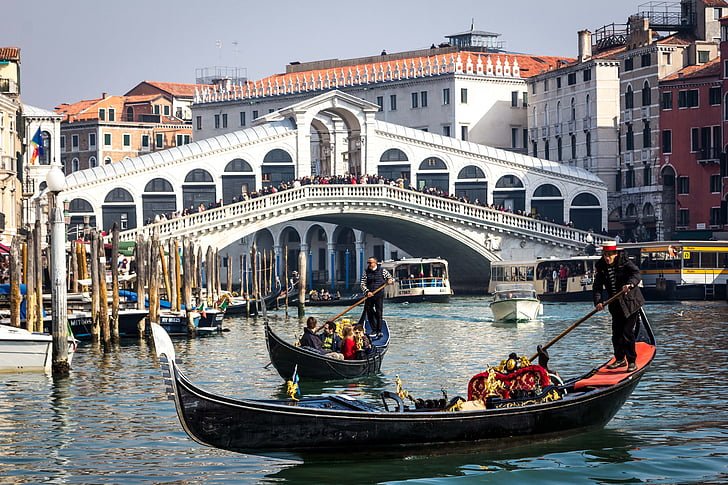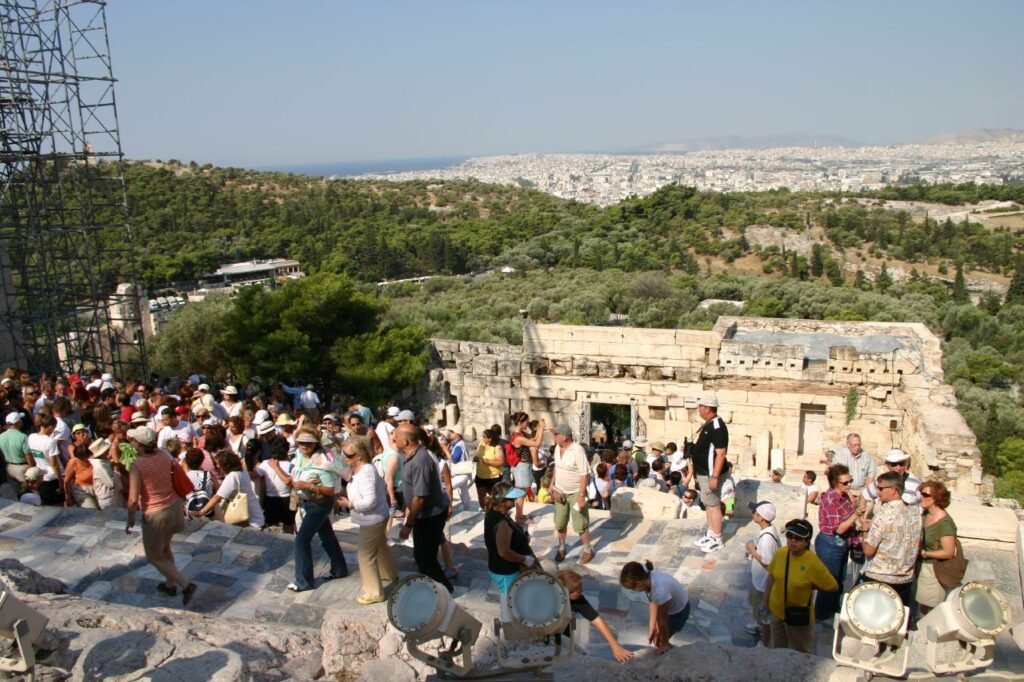9 Exciting Locations on Your Memorable Senior Vacation to Havana
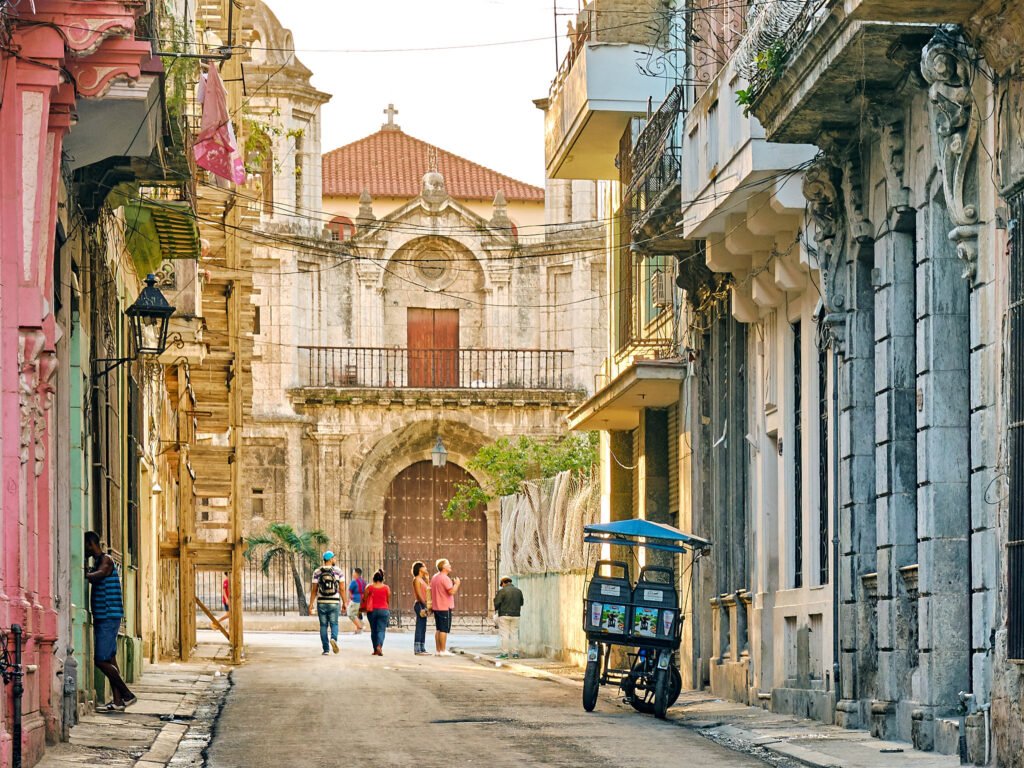
Last Updated on August 8, 2025 by Rose Ann
Are you dreaming of a destination where vibrant history meets contemporary charm? Havana, the pulsating heart of Cuba, offers seniors a unique blend of nostalgic allure and engaging experiences tailored to create lasting memories.
From cobblestone streets echoing with stories of the past to breathtaking coastal views, Havana extends a warm invitation for mature travelers to immerse themselves in its distinctive rhythm and soul.
What makes Havana particularly appealing for senior travelers? Beyond its architectural wonders and cultural richness, this Caribbean gem offers accessibility with numerous senior-friendly activities.
Whether you prefer leisurely strolls through historic districts, relaxing seaside promenades, or enriching cultural experiences, Havana accommodates various mobility levels and interests. With thoughtful preparation and insider knowledge, your Cuban adventure can be both comfortable and captivating.
Ready to explore this magnificent destination? This comprehensive guide highlights nine must-visit locations, provides essential travel preparation tips, and addresses key considerations like medical insurance requirements. We’ll guide you through navigating Havana’s most enchanting spots while ensuring your journey is as seamless as it is memorable.
Let’s discover how Havana can become the highlight of your travel experiences, promising an escapade you’ll treasure for years to come.
Discovering the Best Senior Vacation to Havana
Havana’s magnetic appeal for seniors stems from its perfect balance of cultural immersion and customizable experiences. From guided small-group tours designed with mature travelers in mind to personalized itineraries that accommodate different energy levels, Havana offers flexibility that enhances every aspect of your journey.
With knowledgeable local guides readily available, navigating Havana becomes effortless. These experts provide invaluable insights that transform your understanding of the city’s vibrant streets and historical landmarks. Whether you’re captivated by the colonial charm of Old Havana or the tranquil beauty of the coastal Malecón, local guidance ensures you experience authentic Cuba while remaining comfortable and secure.
What truly distinguishes Havana as a senior destination is its multifaceted appeal. The city seamlessly combines historical exploration, cultural engagement, and natural beauty, creating an environment where every traveler finds their own connection to Cuban life. This diversity of experiences makes Havana not merely a vacation spot but a journey of discovery that resonates with the mature traveler’s appreciation for depth and authenticity.
Prefer to listen rather than read?
9 Must-Visit Places for Any Senior Vacation to Havana
There are numerous attractions to consider during your senior vacation to Havana. Each one gives you a taste of Cuban culture and history.
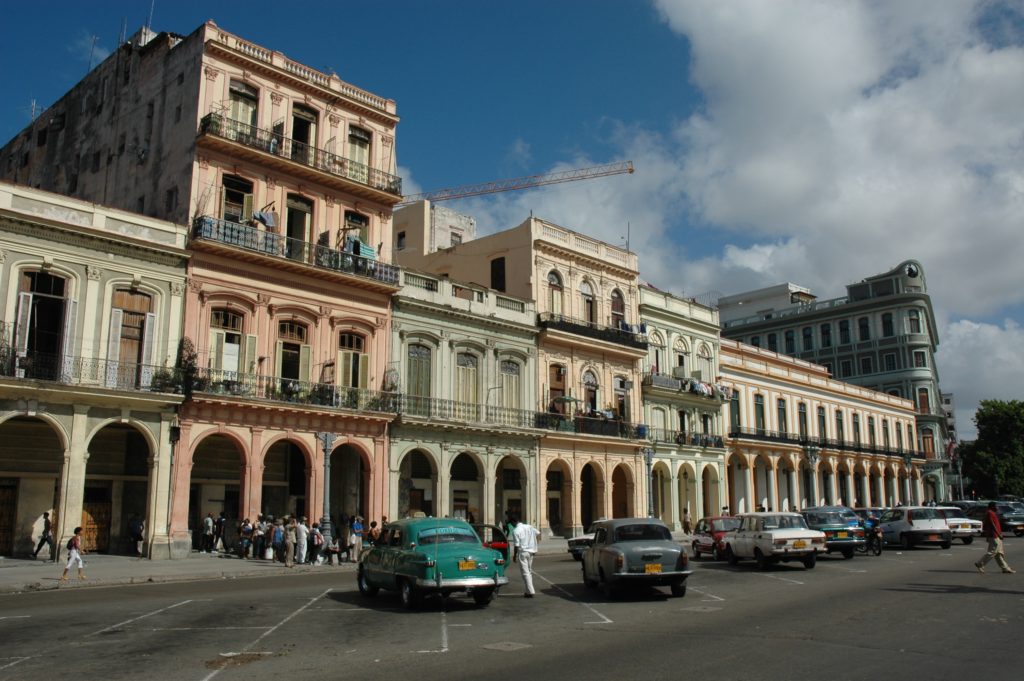
1. Old Havana: A UNESCO World Heritage site
Old Havana, known as “Habana Vieja,” is a mesmerizing blend of historic architecture and lively streets. This UNESCO World Heritage site is the heart of Cuba’s capital, where colonial buildings meet vibrant Cuban culture.
For seniors, walking through Old Havana is like stepping back in time. The area is adorned with baroque and neoclassical structures, including the Cathedral de San Cristóbal and the Palacio de los Capitanes Generales. Discovering the history of Old Havana makes this worth adding to your retirement bucket list of places to visit.
Seniors can enjoy strolls along the cobblestone streets, taking in the colorful facades and local artisans selling their crafts. Plaza Vieja and Plaza de la Catedral are must-visits, offering cafes and benches for rest and people-watching.
Access to Old Havana is easy, with major streets like Obispo and Mercaderes leading into the area. Public transport options include the Habana Bus Tour, which stops near Central Park, a short walk from Old Havana’s core.
Visiting Old Havana is a journey through Cuba’s soul, where history, music, and art come alive. Its pedestrian-friendly layout makes it comfortable for seniors to explore, with plenty of places to rest and soak in the atmosphere.
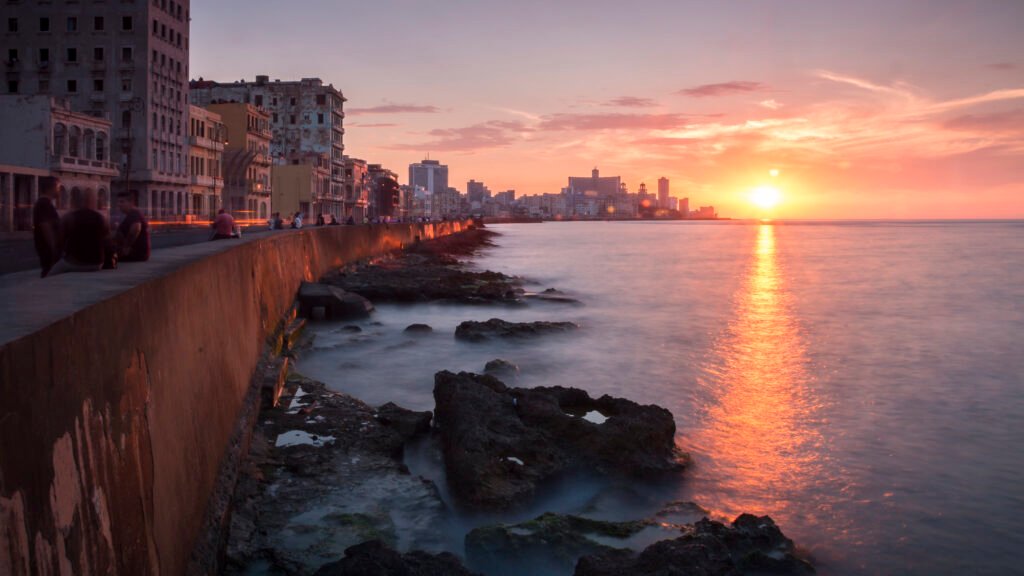
2. The Malecón: Iconic Seaside Promenade
The Malecón, Havana’s famous waterfront boulevard, stretches for 8 kilometers along the coastline, offering seniors a perfect setting for leisurely walks. This iconic promenade provides stunning ocean views and a glimpse into everyday Cuban life.
Senior visitors particularly appreciate the Malecón for its accessibility and abundant seating. The walkway features numerous benches ideal for resting while enjoying the sea breeze. It’s also a wonderful place to observe local culture, from fishermen casting their lines to musicians sharing live performances—all contributing to an authentic Cuban experience.
Access to the Malecón is straightforward, with streets like Calle 23 and Avenida de los Presidentes leading directly to it. For seniors preferring public transportation, buses along Linea Street provide convenient access with stops a short distance from the waterfront.

3. The Morro Castle: Historical Fortress
The Morro Castle, known as “Castillo de los Tres Reyes Magos del Morro,” stands majestically at the entrance of Havana Harbor. This 16th-century fortress is a testament to Cuba’s rich history, offering seniors a glimpse into the island’s colonial past. The castle is renowned for its iconic lighthouse and impressive military architecture, making it a must-visit for history enthusiasts.
Seniors can explore the well-preserved ramparts and enjoy panoramic views of the Havana skyline and the sea. The castle’s interior houses a maritime museum displaying artifacts that narrate the maritime history of Cuba. Guided tours are available, providing insightful historical context.
To reach the Morro Castle, seniors can take a short taxi ride from Old Havana or enjoy a scenic walk along the Malecón. The castle is across the harbor, accessible via the Tunnel de la Habana. For those preferring public transport, buses stop near the tunnel’s entrance on the Havana side, from where it’s a short journey to the castle.
Visiting the Morro Castle allows seniors to immerse themselves in the historical narrative of Havana and enjoy breathtaking views, all while experiencing one of Cuba’s most iconic landmarks.
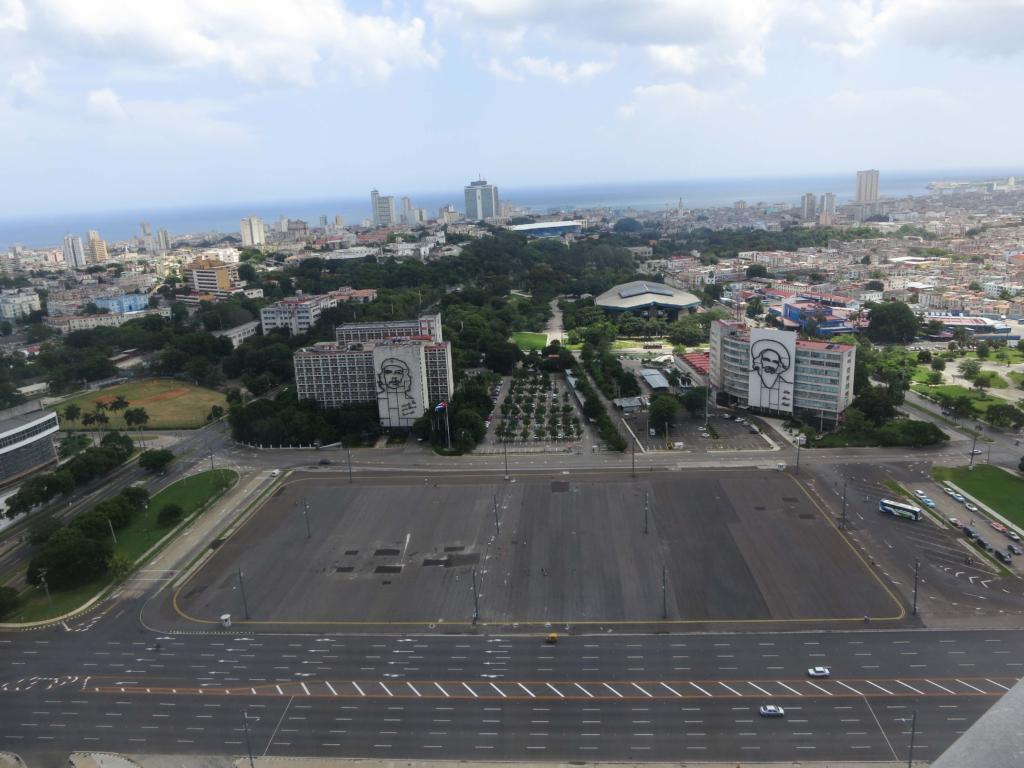
4. Plaza de la Revolución: A Symbol of Cuban History
Plaza de la Revolución is a significant landmark in modern Cuban history and a pivotal site for understanding the country’s contemporary narrative. This vast square has been the stage for many political rallies and is adorned with monuments of Cuban national heroes, including José Martí and Che Guevara.
Seniors visiting the plaza can engage with Cuba’s revolutionary history. The towering José Martí Memorial offers an observation deck, providing expansive views of Havana. The steel outlines of Che Guevara and Camilo Cienfuegos on nearby buildings are striking visual reminders of Cuba’s revolutionary past.
The plaza is easily accessible and is located in the Vedado district. Major streets like Avenida Paseo and Calle 23 lead directly to the square. Public buses frequently run along these routes, making the plaza easily reachable for seniors. Additionally, the Habana Bus Tour has a stop near the plaza, making it a convenient option for tourists.
A visit to Plaza de la Revolución allows seniors to connect with the pivotal moments of Cuban history and witness the grandeur of one of the largest city squares in the world. It’s a place that resonates with the voices of the past and presents a unique perspective on Cuba’s journey through the ages.
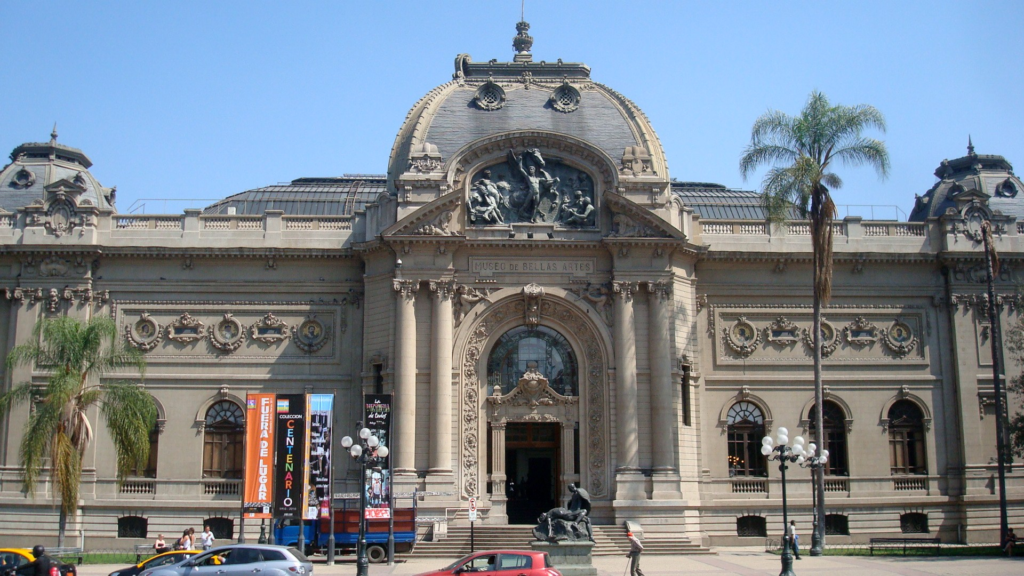
5. Museo Nacional de Bellas Artes: Artistic Treasure
The Museo Nacional de Bellas Artes, or National Museum of Fine Arts, in Havana, is a paradise for art lovers. Housing the world’s largest collection of Cuban art, the museum is divided into two buildings: one dedicated to Cuban art and the other to international art.
This museum offers a serene and intellectually stimulating environment for senior travelers. They can appreciate the evolution of Cuban art from colonial times to the present day.
The Cuban art building showcases works from the 17th century to contemporary pieces, highlighting the island’s rich and diverse artistic heritage. Seniors can enjoy masterpieces by renowned Cuban artists like Wifredo Lam and René Portocarrero. On the other hand, the international art building contains works from Europe, Asia, and ancient Greece.
Located in central Havana, near Parque Central, the museum is easily accessible by public transport or taxi. Streets like Trocadero and San Rafael lead directly to it. For seniors who prefer a guided experience, the museum offers tours that provide deeper insight into the collections.
Visiting the Museo Nacional de Bellas Artes is not just about viewing art; it’s an opportunity for seniors to delve into the soul of Cuban culture and history through its artistic expressions.
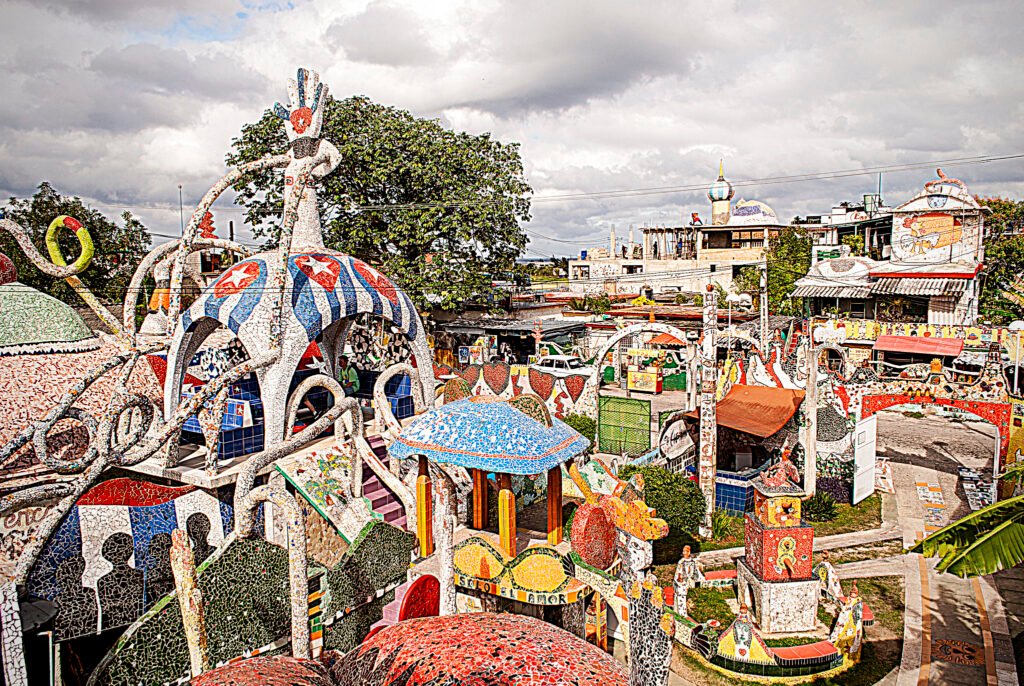
6. Fusterlandia: A Mosaic Wonderland
Fusterlandia is a unique and whimsical art project in the neighborhood of Jaimanitas, Havana. Created by Cuban artist José Fuster, this community art project has transformed the area into a vibrant mosaic wonderland. For senior visitors, Fusterlandia offers a magical and inspiring experience, showcasing the power of community art and creativity.
The project started with Fuster decorating his home with colorful mosaics and soon expanded to include streets and houses in the neighborhood. Seniors can wander through this fantastical landscape of sculptures, murals, and buildings adorned with tiles, ceramics, and paintings. Each piece tells a story, reflecting both Cuban culture and universal themes.
Fusterlandia is a bit off the beaten path but well worth the visit. It’s accessible by taxi, the most convenient option for seniors. Buses run to Jaimanitas from central Havana for those interested in public transport, though a short walk may be required to reach Fusterlandia.
Exploring Fusterlandia is like stepping into a living art gallery. It’s an uplifting and joyful experience that celebrates imagination and community spirit, offering seniors a delightful and unforgettable journey into the heart of Cuban creativity.
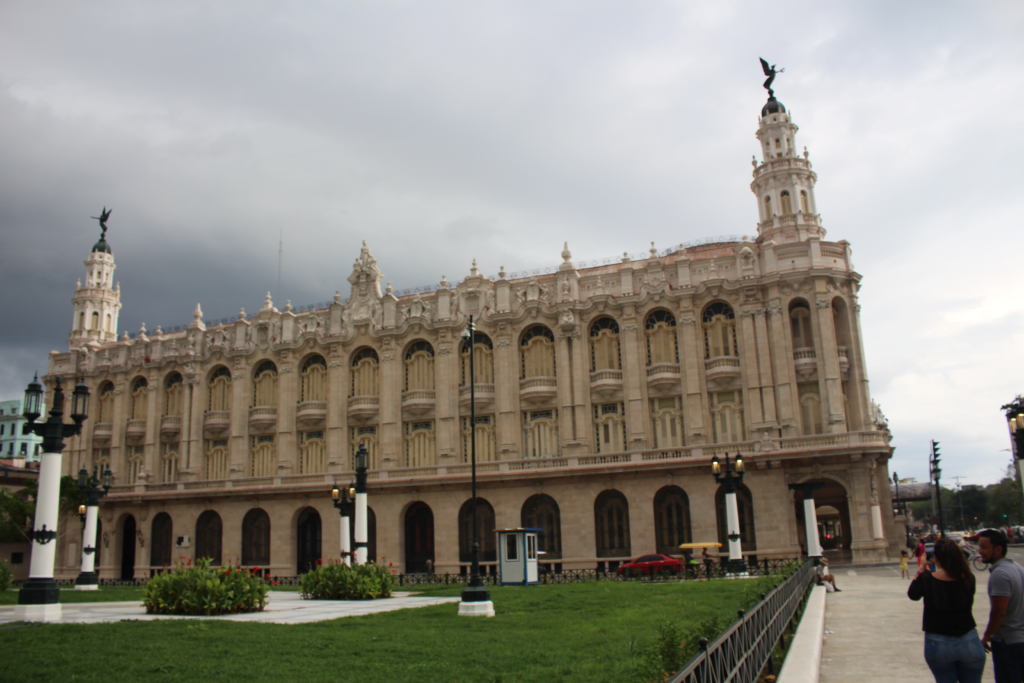
7. Gran Teatro de La Habana: Architectural Beauty
The Gran Teatro de La Habana stands as a masterpiece of Cuban architecture and a beacon of cultural heritage. With its intricate façade and elegant interior, this stunning building captivates senior visitors interested in architecture and the performing arts.
Seniors can marvel at the theater’s exquisite details, from its lavish lobby to the grand auditorium renowned for superior acoustics. As home to the Cuban National Ballet, the theater hosts various performances including ballet, opera, and concerts, offering mature travelers an opportunity to experience Cuba’s vibrant performing arts scene.
Located in the heart of Havana near the Capitol building, the theater is easily accessible. Streets like Prado and San Rafael lead directly to it, and the area is well-served by local taxis and public transportation, making this cultural gem readily available to senior visitors.
8. Hemingway’s Havana: Visiting Hemingway’s Haunts
Hemingway’s Havana offers seniors a fascinating glimpse into the life of the famous American author Ernest Hemingway, who made Cuba his home for many years. This literary journey brings history to life through the places Hemingway frequented and loved.
The tour typically includes stops at the Hotel Ambos Mundos, where Hemingway wrote part of “For Whom the Bell Tolls,” and his favorite bars, El Floridita and La Bodeguita del Medio, known for their daiquiris and mojitos. A highlight is visiting Finca Vigía, Hemingway’s preserved home in San Francisco de Paula, featuring his living quarters, library, and the famous fishing boat, Pilar.
For senior travelers, this cultural experience provides a tangible connection to literary history. The journey to Finca Vigía requires a short taxi ride from central Havana, while the other Hemingway sites are conveniently located within the city center, making this literary pilgrimage accessible for mature visitors.
9. Cuban Music Venues: Experience Live Music
Cuban music venues offer seniors an essential cultural experience, connecting them with the island’s vibrant musical heritage. From traditional son and salsa to jazz and rumba, Havana’s music scene provides an authentic glimpse into the soul of Cuban culture.
Senior visitors can enjoy performances at several renowned venues, including Casa de la Música, La Zorra y el Cuervo jazz club, and the historic Cabaret Tropicana. These spaces offer lively yet welcoming atmospheres, often featuring dance performances alongside musical entertainment. The energy in these places is electrifying yet approachable, making them suitable for seniors of various activity levels.
Most music venues are centrally located in areas like Vedado and Miramar, easily accessible by taxi or public transportation. An evening of live Cuban music offers more than entertainment—it provides an immersive cultural connection to Cuba’s vibrant heart and rhythm.
Preparing for Your Senior Vacation to Havana
Embarking on a senior vacation to Havana is an exciting adventure but requires thoughtful preparation. From choosing the best time to visit to packing essentials, a little planning can go a long way in ensuring a comfortable and memorable trip.
This section will cover key aspects of preparing for your Havana journey, ensuring you’re well-equipped to enjoy every moment.
- Language and Communication
- Spanish is the primary language in Havana. While some locals speak English, especially in tourist areas, carrying a Spanish phrasebook or translation app can be very helpful.
- Learning a few basic Spanish phrases for everyday interactions shows respect for the local culture and enhances your travel experience.
- Money Matters
- Cuba operates primarily on a cash-based economy, with credit cards issued by American banks often unusable. Ensure you have enough Cuban Convertible Peso (CUC) for your expenses.
- Exchange currency through official channels before arrival, and be mindful of exchange rates and locations in Havana where currency exchange is available.
- Be aware of potential banking limitations and plan your budget accordingly to avoid financial complications during your trip.
- Cultural Sensitivity
- Understanding and respecting Cuban customs enhances your interactions with locals. Approach cultural differences with an open and respectful attitude.
- Be aware of appropriate behavior in various settings, particularly when interacting with local residents or visiting historical sites
- A respectful and open attitude will enrich your understanding of Cuban life and deepen your appreciation for this unique destination.
- Clothing and Comfort
- Pack lightweight, breathable clothing suitable for Havana’s warm weather, along with a hat and sunglasses for sun protection.
- Comfortable walking shoes are essential, as exploring Havana often involves walking on uneven surfaces.
- Consider packing a light jacket or sweater for cooler evenings, and an umbrella or raincoat for unexpected showers, particularly during the rainy season.
- Health and Medication
- Bring all necessary medications with their original prescriptions, ensuring you have sufficient supplies for your entire stay plus extra for unexpected delays.
- Include a basic travel health kit with pain relievers, bandages, and personal health monitors.
- Pack sunscreen and insect repellent to protect against the Caribbean sun and mosquitoes.
- Technology and Gadgets
- While Havana has a certain old-world charm, modern technology can enhance your experience. Bring a camera or smartphone for photos, along with adapters for Cuban outlets (110V, type A and B plugs).
- Be prepared for limited internet connectivity, as access can be sporadic and sometimes difficult to find outside of major hotels and designated WiFi zones.

Medical Insurance: A Requirement for Senior Travelers to Havana
Traveling to Havana as a senior requires proper medical insurance coverage, not just for peace of mind but as a mandatory entry requirement. Since 2010, the Cuban government has mandated that all visitors, including seniors, must have valid health insurance that includes COVID-19 coverage.
When preparing for your trip, verify that your policy covers emergency medical expenses, hospital stays, and medical evacuation if necessary. Many standard U.S. health insurance plans and Medicare do not provide coverage in Cuba, making specialized travel insurance essential. As of 2025, all travelers must be able to present proof of their insurance upon arrival, or they may be required to purchase a Cuban policy at the airport.
For senior travelers who may have pre-existing conditions, it’s particularly important to select comprehensive coverage that addresses potential health concerns. Most recommended policies for Cuba travel include at least $50,000 in emergency medical coverage and $50,000 for emergency evacuation. Companies like TravelexInsurance, AXA Assistance USA, and GeoBlue offer Cuba-compliant plans with coverage tailored to senior travelers’ needs.
Cuban Government Regulations
The Cuban government maintains specific requirements for all tourists, including senior travelers. Understanding these regulations ensures a smooth entry process and a worry-free stay in this beautiful country.
One of the most critical requirements is medical insurance coverage for all visitors. Upon arrival, you may be asked to show proof of a valid medical insurance policy that covers health and medical expenses in Cuba. If unable to provide this, tourists are required to purchase Cuban medical insurance at the airport.
Additionally, all travelers must obtain a Cuban Tourist Card, which gives a maximum of 30 days to stay in the country. These cards are typically available through airlines offering flights to Cuba or can be purchased in advance through authorized providers. Keep your Tourist Card safe throughout your visit, as you’ll need it again when departing Cuba.
Conclusion
The diverse attractions of Havana make any senior trip to Cuba truly worthwhile. From the colonial splendor of Old Havana to the breathtaking vistas along the Malecón, each experience contributes to an unforgettable journey. Remember to secure comprehensive travel insurance before purchasing your ticket, and be mindful of using only legitimate transportation to ensure both safety and fair pricing.
By keeping this guide in mind, your senior vacation to Havana will be not just memorable but truly transformative. The combination of rich cultural heritage, warm hospitality, and unique historical context creates an experience that resonates long after you’ve returned home.
Have you visited any of these Havana highlights, or are you planning a trip to this captivating destination? We’d love to hear about your experiences or answer any questions you might have about traveling to Cuba as a senior. Share your thoughts with us!
FAQ on Senior Vacations to Havana
- What is the best time to visit Havana?
- The dry season from November to February provides ideal weather for a senior vacation to Havana, with pleasant temperatures and minimal rainfall.
- Another excellent period is July to August, coinciding with the vibrant Havana Carnival celebrations each weekend. For seniors sensitive to heat, the winter months (December-February) offer more comfortable conditions for exploring the city.
- How do you find legitimate taxis in Havana?
- Look for yellow cabs with a blue “Cuba” name on their plate—these are government-operated and reliable. The color and official plate indicate that the taxi meets safety and pricing standards.
- If you encounter only private vehicles in your area, ask hotel staff to call a reputable service or inquire about recommended transportation options from local guides.
- What are Cuban Tourist Cards?
- Cuban Tourist Cards are entry visas required for all visitors to Cuba. Each card provides a 30-day stay authorization in the country.
- These cards are available through most airlines offering flights to Cuba or can be purchased in advance from authorized travel providers. Remember to keep your Tourist Card secure throughout your visit, as you’ll need it for departure.
- What happens if you visit Havana without travel insurance?
- Without proof of travel insurance upon arrival, airport security will direct you to purchase a Cuban medical insurance policy before entering the country.
- This on-the-spot requirement cannot be waived, as insurance coverage is mandatory for all visitors. To avoid delays and potentially limited coverage options, it’s advisable to secure comprehensive travel insurance before your departure.
- How accessible is Havana for seniors with mobility concerns?
- While Havana has made progress in accessibility, seniors with mobility challenges should be aware that many historic areas have cobblestone streets and buildings without elevators. However, many major attractions offer accommodations for visitors with limited mobility.
- Consider booking guided tours specifically designed for seniors, as these often include transportation and routes selected for easier navigation. Many casa particulares (private homestays) now offer ground-floor rooms specifically designed with senior travelers in mind.
- What currency should I bring to Cuba?
- The Cuban Convertible Peso (CUC) is the primary currency for tourists, though some places also accept Cuban Pesos (CUP). Since U.S. debit and credit cards generally don’t work in Cuba, bring sufficient cash for your entire stay.
- It’s advisable to exchange some currency before arrival and be aware of official exchange locations in Havana. Keep small denominations handy for tips, street vendors, and small purchases where change may be limited.
- Are there senior-specific tours available in Havana?
- Yes, several tour operators specialize in senior-friendly experiences in Havana. Companies like Road Scholar and Senior Cycling offer programs specifically designed with mature travelers in mind, featuring appropriate pacing, accommodation considerations, and activities suitable for various mobility levels.
- These tours often include expert guides who provide rich cultural context while ensuring comfortable travel conditions for seniors.
- How reliable is healthcare in Havana for senior travelers?
- Havana offers specialized clinics for tourists, such as Clínica Central Cira Garcia, which provides better care than public facilities. However, healthcare standards differ from many Western countries, with shortages of basic medications and equipment being common.
- Senior travelers should bring all necessary prescription medications, as many drugs are unavailable locally. Your required travel insurance should include emergency evacuation coverage for serious medical situations that might require treatment outside Cuba.
References
- Centers for Disease Control and Prevention. (2024). Traveler’s Health. CDC.gov.
- Cuban Ministry of Tourism. (2025). Travel Requirements for Foreign Visitors. Cuba Travel.
- U.S. Embassy in Cuba. (2025, February). Medical Assistance Information for U.S. Citizens. cu.usembassy.gov.
- World Health Organization. (2024). International Travel and Health Guidelines. WHO.int.
- UNESCO World Heritage Centre. (2023). Old Havana and its Fortification System. UNESCO.org.
- TravelexInsurance. (2025). Travel Insurance for Cuba: Required Medical Coverage for Visa. TravelexInsurance.com.
- Road Scholar. (2025). Cuba Travel Guide | Cuba Travel Tips for Senior Group Travel. RoadScholar.org.
- CubaHeal. (2025, February). Essential Guide to Cuba Travel Insurance. CubaHeal.com.

